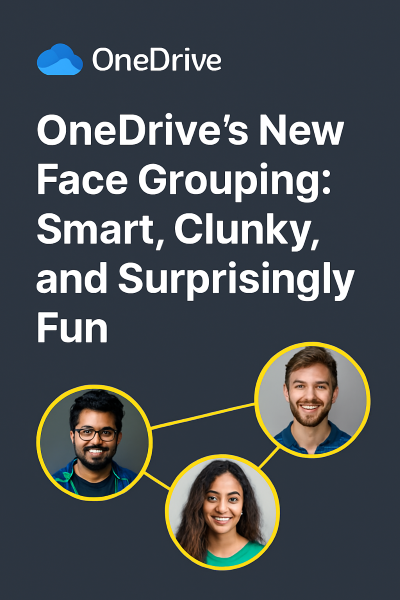It was a muggy October afternoon in Bengaluru when I first noticed something odd in my OneDrive mobile app. A new tab had quietly appeared under “Photos,” and it wasn’t just sorting by date or album—it was grouping faces. Not gonna lie, my first thought was: “Here we go, another AI feature that’s gonna mislabel my cousin as my cat.”
Turns out, Microsoft is previewing a new People grouping feature in OneDrive photos, and I’ve been part of the early rollout on mobile. If you haven’t seen it yet, it’s likely still in preview or rolling out gradually. According to some resources, this feature uses AI to detect faces in your photo library and lets you tag them manually. Once tagged, OneDrive builds a collection around that person—kind of like Google Photos, but with Microsoft’s privacy quirks.
Why I Decided to Test It
I’ve been managing hybrid environments for years—Hyper-V clusters, SharePoint integrations, and yes, OneDrive sync nightmares. So when Microsoft rolls out anything that touches user data, I pay attention. People grouping sounded promising for internal teams who rely on OneDrive for media-heavy workflows (think field reports, event documentation, or HR onboarding photos).
Plus, I was curious: Could this help organize our shared folders without needing third-party photo management tools?
Step-by-Step: What I Saw in the Beta
- Initial rollout: No fanfare. Just a subtle “People” tab in the Photos section of OneDrive mobile.
- Face detection: The AI flagged faces across my photo library. Some were spot-on (my teammate Ramesh), others… not so much (a mannequin from a training session got grouped with my manager).
- Manual tagging: You have to assign names manually. Once tagged, OneDrive builds a collection of that person’s photos.
- Privacy toggle: You can disable the feature—but only three times a year. That’s not a typo. Microsoft limits how often you can turn it off.

I tested this on a Pixel 6 Pro running Android 14, synced to a Microsoft 365 Business Standard account. The feature didn’t show up on desktop or web yet, so it’s clearly mobile-first for now.
Bugs, Quirks, and Surprises
- False positives: The AI grouped two different people with similar hairstyles. I had to manually untag and reassign.
- No auto-tagging: Unlike Google Photos, OneDrive doesn’t auto-suggest names based on past tags. You’re on your own.
- Limited control: Once a face is tagged, you can’t easily remove it from the group. You have to dig into settings and manually ungroup.
- Privacy friction: That “three times a year” toggle limit? It’s real. I tried disabling and re-enabling to test behavior, and got a warning that I was nearing my limit.
Workarounds and Lessons Learned
- Use it for internal teams only: I wouldn’t recommend enabling this on shared family accounts or sensitive folders. Stick to work-related media.
- Tag wisely: Start with high-confidence faces—people who appear frequently in your library. This minimizes cleanup later.
- Don’t rely on it for compliance: If you’re in a regulated industry, this feature isn’t granular enough for audit trails or data classification.
Final Thoughts
Microsoft’s People grouping in OneDrive is a step toward smarter media organization, but it’s not enterprise-ready yet. It’s more of a convenience layer for mobile users than a robust tagging system. That said, I appreciate the direction—it’s clear Microsoft is trying to bring more AI-driven utility to OneDrive beyond Copilot summaries and document previews.
I’ll keep testing as it rolls out to desktop and web. If they add auto-tagging or better privacy controls, this could become a legit productivity booster.
What About You?
Have you spotted the People tab in your OneDrive app yet? If so, did it nail the face recognition or go off the rails? And if you’re managing OneDrive in a business environment, would you enable this for your users?
Drop your thoughts below—or better yet, share a screenshot of your weirdest face grouping. Let’s compare notes.
